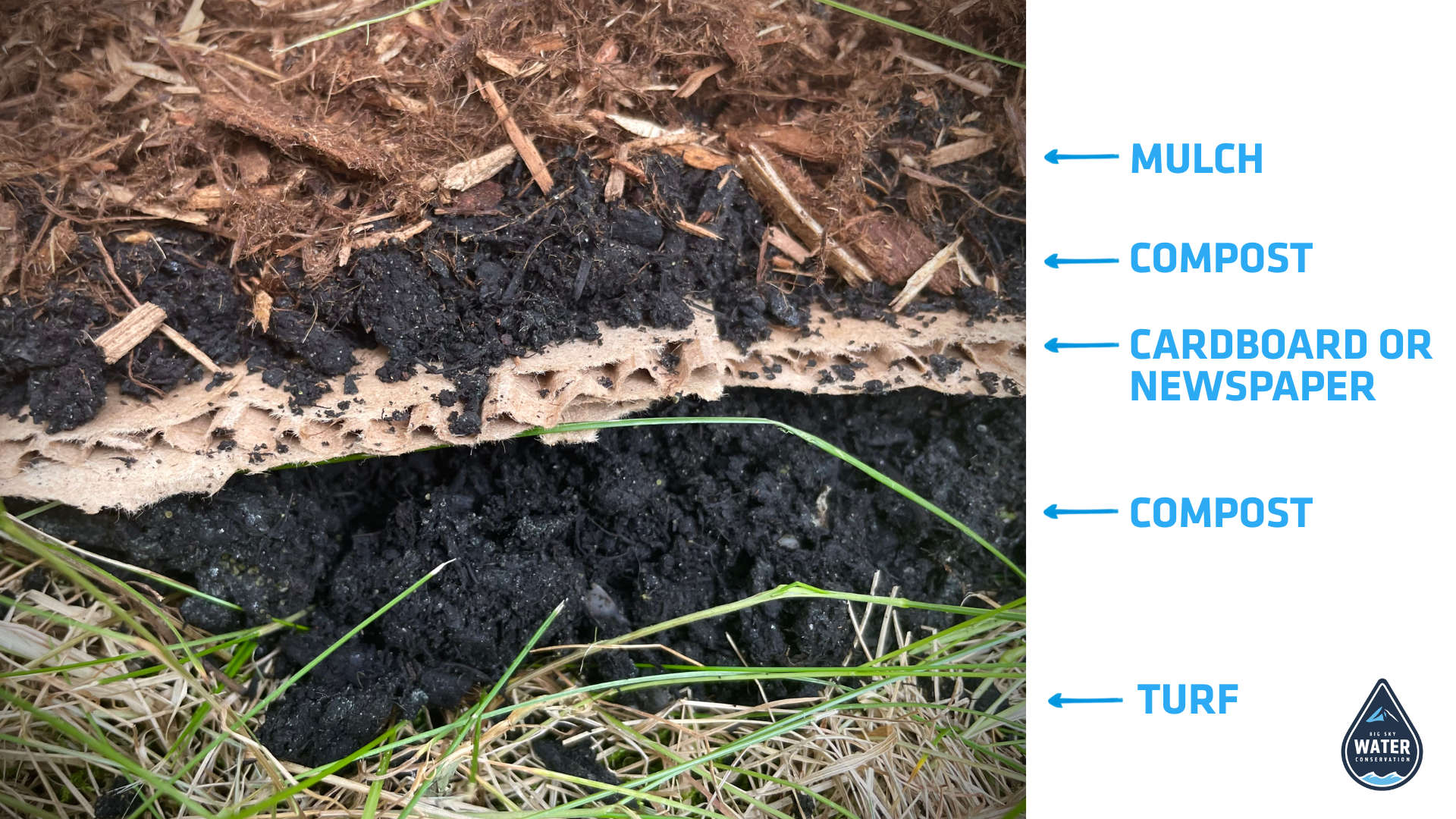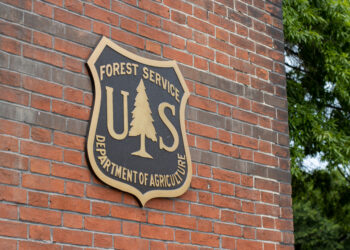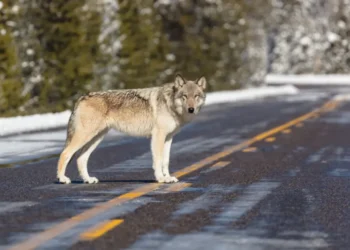By Jess Olson GUEST COLUMNIST
Once a symbol of landscape perfection, the traditional green lawn is increasingly being viewed through a new lens of sustainability and efficiency. Turfgrass or turf,also known as sod, is a nonnative species that, while popular, is water-intensive, often requires harsh fertilizers, does not support native pollinators and has shallow roots that do not create healthy soils.
Demanding vast amounts of water, chemicals and time, these water-hungry and once foundational elements of a landscape are giving way to a more responsible and rewarding approach to our outdoor spaces: turf conversion. This isn’t just about removing grass; it’s about reimagining your outdoor space into a vibrant, eco-friendly, and often lower-maintenance haven that’s more suitable for our southwest Montana environment and climate.
Ready to trade in your mower? Through a new program that will prioritize functional, eco-friendly, water-wise, and fire-wise lawns, the Gallatin River Task Force is ready to jump in and help you with your very own landscape transformation. Here’s a streamlined, four step process to introduce turf conversion to your own outdoor spaces.
Create healthy soils, the foundation of your new landscape

Think of your soil as the bedrock of your new landscape. Just like a building needs a strong foundation, your new plants will need rich, living soil to thrive. Before you begin planting, focus on preparing the ground. There are several methods to transform your sod into more sustainable turf, and one of the easiest, eco-conscious methods is through sheet mulching. This process is generally the most environmentally friendly, and involves composting the existing lawn, rather than removing and disposing of it.
By tossing layers of local and organic compost, mulch and topsoil on top of existing grass you can create a new layer of nutrient rich soil ready to take on new native plants. This suppresses weeds, enriches the soil, and provides a fertile base for new plantings. It’s highly effective, beneficial for soil health, and will prepare your landscape for spring plantings.
Design your preferred landscape with function
With a healthy canvas of soil, it’s time to envision your outdoor space. This step blends aesthetic desires with practical considerations; it’s where the fun and creativity comes into play. Your vision should help shape your design choices based on what you are aiming for: maximum water savings, reduced maintenance, increased biodiversity, a vibrant edible garden, or a beautiful outdoor living area? The landscape is your oyster.
It’s also important to assess your site, and understand the microclimates that exist with respect to sunlight exposure, and seasonal influences like water and snowpack. Which areas are shady, and which areas may see more foot and animal traffic?
Choosing the right plants is also key for the long-term success of your new landscape. Prioritizing native plants will set your new space up for success, and adhering to local climate conditions, soil types and rainfall patterns will create the perfect sustainable new outdoor space.
Incorporating permeable hardscape features is also an option for pathways, patios, or seating areas. Create diversity through raised garden beds, rock gardens, or decorative elements that enhance usability and appeal while reducing the need for thirsty turf or non-native plants.
Bring your vision to life
Now comes the exciting part: putting your plan into action. Establishing your layout will get you started, but planting and defining other elements of your new landscape are elemental to its ongoing sustainability. Consider who will do the work to put your final vision into action. Are you a DIY-er, or do you prefer a landscaper or property manager to help? In partnership with Alpenscapes, the task force has helped create a plethora of resources that can be helpful in this step, connecting you with the best local sources to transform your new space.
Choosing a new, more efficient irrigation system, if needed, is also paramount. Make sure all weather sensors are programmed correctly for the most efficient system possible, and have a professional install it for you to guarantee that you are using your irrigation properly for your newly converted space. Since water efficiency is the name of the game, consider a well-designed drip system, or use mulch in your new planted areas to help deliver and keep moisture where it needs to be for your plant’s health.
Maintain and nurture your new landscape
While turf conversion significantly reduces overall maintenance of an outdoor space, your new landscape isn’t entirely “set it and forget it.” Initial care and ongoing maintenance will ensure its longevity and beauty. Your landscape is a living system, so paying attention to how your plants are growing—noting signs of stress, other excesses of their new environment or invasive species—will help keep your outdoors beautiful and sustainable for many years.
By following these steps, you can successfully transform your water-reliant lawn into a vibrant, sustainable, and lower-demand landscape that enhances your home’s beauty, supports local ecology, keeps our community safe, and aligns with a more environmentally conscious lifestyle. Embrace the change, and enjoy the countless benefits of a converted outdoor space.
The Task Force is here to help you through each step of this landscaping process. Head online to learn more and sign up for GRTF’s turf conversion service or contact jessica@gallatinrivertaskforce.org to for more information on how to get started.
Jess Olson is the Conservation Manager at the Gallatin River Task Force. She manages the Task Force’s Water Conservation Program and holds a Qualified Water Efficient Landscaper certification to help you with your water-wise projects.














